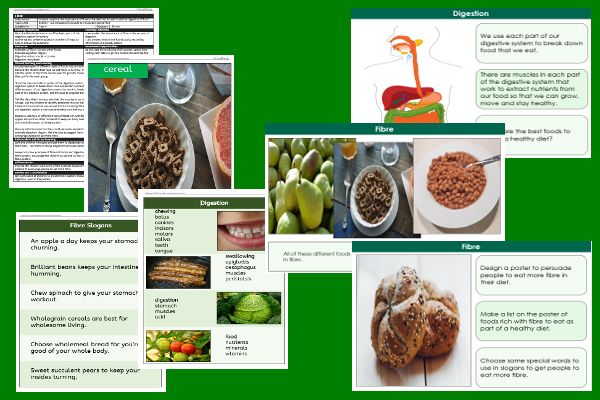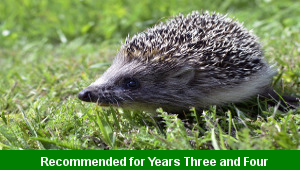Lesson Five – Fibre

This science teaching pack for Key Stage Two gets the children to explore, describe and record the importance of fibre in the diet that is used to aid the process digestion of food in the human body.
The class can design and publish display posters to persuade families to eat a fibre rich diet for their daily meals listing some of the foods that can help digestion.
Download this teaching pack including a lesson plan, classroom activities and an interactive presentation to explore, describe and record the importance of fibre in the diet that is used to aid the process digestion of food in the human body
Activities in this teaching pack include display posters to identify and describe different foods that are rich in fibre, a worksheet to select and use persuasive language on display posters to encourage families to eat a fibre rich diet and a vocabulary word bank to use when designing and publishing posters about the importance of eating fibre.
The interactive presentation can be used to explore and record the importance of fibre in the diet that is used to aid the digestion of food.
This lesson is part of a science scheme of work to get the children to identify and describe the functions of some of the different parts of the digestive system and the importance of eating foods as part of a healthy lifestyle. There are teaching activities for shared learning, differentiated worksheets to support independent learning and interactive presentations to introduce concepts and key skills.
-

Rounding Hundreds
Explain and model how to round some different numbers to the nearest hundred based on the place values of the digits in each number
-

Rounding Tens
Identify and record how to round some different numbers to the nearest ten based on the place values of the digits in each number
-

Classic Animal Stories
Investigate the structure and content of classic works of fiction by significant authors with animals as the main characters
-

Cities, Towns and Villages
Research and present the history of a range of different buildings and people that are part of the local community using a school exhibition
